Impact of Tourism Growth on the Changing Landscape of a World Heritage Site: Case of Luang Prabang, Lao PDR
Abstract
:1. Introduction
2. The Case Study
3. Methodology
3.1 Significant Changes in Built Environment
3.2 Spatial Pattern of Increase of Touristic Usage
3.3 Relation between Touristic Usage and Significant Changes in the Built Environment
- Usage (USAGEexisting): Buildings that changed from other types of usage to touristic usage are equal to 1, and all other buildings are equal to 0.
- Architecture (ARCHexisting): Buildings that changed from other types of architecture to Lao traditional architecture coded as 1, and all other buildings as 0.
- Building materials (MATexisting): Buildings that changed from traditional to modern materials assigned as 1, and all other buildings as 0.
- Roof materials (ROOFexisting): Buildings that changed from modern to traditional roof materials assigned as 1, and all other buildings as 0.
4. Results and Discussion
4.1 Spatial Pattern of Increase of Touristic Usage
4.2 Relation between Increase of Touristic Usage and Significant Changes in the Built Environment
5. Conclusions
Acknowledgments
Author Contributions
Conflicts of Interest
Abbreviations
| DPL | Luang Prabang Department of World Heritage Site (La Department du Patrimoine Luang Prabang) |
| GIS | Geographic information systems |
| HUL | Historic Urban Landscape |
| PSMV | Safeguarding and Preservation Plan (Plan de Sauvegard et de Mise en Valeur) |
References
- Peters, H.A. Dancing in the market: reconfiguring commerce and heritage in Lijiang. In Cultural Heritage Politics in China; Blumenfield, T., Silverman, H., Eds.; Springer Science + Business Media: New York, NY, USA, 2013; pp. 115–140. [Google Scholar]
- Nasser, N. Planning for Urban Heritage Places: Reconciling Conservation, Tourism, and Sustainable Development. J. Plan. Lit. 2003, 17, 467–479. [Google Scholar] [CrossRef]
- Frey, B.S.; Steiner, L. World Heritage List: Does it make sense? Int. J. Cult. Policy 2011, 17, 555–573. [Google Scholar] [CrossRef]
- Yung, E.H.K.; Lai, L.W.C.; Yu, P.L.H. Public decision making for heritage conservation: A Hong Kong empirical study. Habitat Int. 2016, 53, 312–319. [Google Scholar] [CrossRef]
- Gao, Y. A changing process of traditional built environment in Yunnan, China. In The Traditional Dwellings and Settlements Working Paper Series; University of Huddersfield: Huddersfield, UK, 2009; Volume 210. [Google Scholar]
- ICOMOS (International Council on Monuments and Sites). Threats to World Heritage Sites 1994–2004: An Analysis. 2005. Available online: http://www.icomos.org/world_heritage/Analysis%20of%20Threats%201994–2004%20final.pdf (accessed on 23 November 2015).
- Imon, S.S. Issues of Sustainable Tourism at Heritage Sites in Asia. In Asian Heritage Management: Contexts, Concerns, and Prospects; Silva, K.D., Chapagain, N.K., Eds.; Routledge: Oxford, UK, 2013; pp. 253–268. [Google Scholar]
- Li, B. Urban sprawl risk assessment based on ecological infrastructure: an approach to smart conservation. In Proceedings of the 44th International Society of City and Regional Planning (ISOCARP), Dalian, China, 19–23 September 2008. [Google Scholar]
- UNESCO (United Nations Educational, Scientific and Cultural Organization). Reports on the State of Conservation of Properties Inscribed on the World Heritage List. In Proceedings of the 33rd Session World Heritage Committee, Seville, Spain, 22–30 June 2009; Available online: http://whc.unesco.org/archive/2009/whc09–33com-7B-Adde.pdf (accessed on 13 November 2015).
- King, V.T. UNESCO in Southeast Asia: World Heritage Sites in Comparative Perspective; NIAS Press: Copenhagen, Denmark, 2015. [Google Scholar]
- Feng, J.; Nishimura, Y. UNESCO WHC-ICOMOS Reactive Monitoring Mission of the Old Town of Lijiang, China, 10–19 January 2008. Available online: http://whc.unesco.org/en/documents/10058 (accessed on 15 November 2011).
- Galla, A. World Heritage in poverty alleviation: Hoi an Ancient Town, Vietnam. In World Heritage Benefits beyond Border; Cambridge University Press: Paris, France; Cambridge, UK, 2012; pp. 107–119. [Google Scholar]
- Teutonico, M.J.; Matero, F. Managing change: Sustainable approaches to the conservation of the built environment. In Proceedings of the 4th Annual US/ICOMOS International Symposium, Philadelphia, PA, USA, 6–8 April 2001. [Google Scholar]
- Bandarin, F.; van Oers, R. The Historical Urban Landscape: Managing Heritage in an Urban Century; Wiley-Blackwell: Oxford, UK, 2012. [Google Scholar]
- Labadi, S. UNESCO, Cultural Heritage, and Outstanding Universal Value: Value-based analyses of the World Heritage and Intangible Cultural Heritage Conservation; AltaMira Press: Lanham, MD, USA, 2013. [Google Scholar]
- Leong, C.; Takada, J.; Yamaguchi, S. Analysis of the changing landscape of a World Heritage Site: Case of Luang Prabang, Lao PDR. Sustainability 2016, 8, 747. [Google Scholar] [CrossRef]
- Dearborn, L.M.; Stallmeyer, J.C. Re-visiting Luang Prabang: Transformations under the influence of World Heritage designation. J. Tour. Cult. Chang. 2009, 7, 247–269. [Google Scholar] [CrossRef]
- Dearborn, L.M.; Stallmeyer, J.C. Inconvenient Heritage: Erasure and Global Tourism in Luang Prabang; Left Coast Press: California, CA, USA, 2010. [Google Scholar]
- Boccardi, G.; Logan, W. Reactive Monitoring Mission to the Town of Luang Prabang World Heritage Property Lao PDR, 22–28 November 2007; World Heritage Centre and the International Council on Monuments and Sites (ICOMOS): Paris, France, 2008. [Google Scholar]
- UNESCO (United Nations Educational, Scientific and Cultural Organization). Impact: The Effects of Tourism on Culture and the Environment in Asia and the Pacific: Tourism and Heritage Site Management in the World Heritage Town of Luang Prabang, Lao PDR; UNESCO and the School of Travel Industry Management University of Hawaii: Bangkok, Thailand, 2004. [Google Scholar]
- Japan Bank International Corporation (JBIC). Pilot Study for Project Formation for the Luang Prabang Tourism Sector Development Project in Lao PDR: Interim Report. 2006. Available online: http://www.mekongtourism.org/wp-content/uploads/ITRMainText5_1.pdf (accessed on 30 November 2006).
- Sitthivan, S.; Komoto, J.; Abe, H. Actual situation of PSMV and problem in historic conservation area in Luang Prabang Province, Lao PDR. J. Arch. Plan. 2005, 591, 119–124. (In Japanese) [Google Scholar] [CrossRef]
- Staiff, R.; Bushell, R. Mobility and modernity in Luang Prabang, Laos: Re-thinking heritage and tourism. Int. J. Herit. Stud. 2013, 19, 98–113. [Google Scholar] [CrossRef]
- Mabbit, R. Lao People’s Democratic Republic. In Urbanization and Sustainability in Asia: Case Studies of Good Practices; Roberts, B., Kanaley, T., Eds.; Asian Development Bank (ADB): Mandaluyong, Philippines, 2006; pp. 189–221. [Google Scholar]
- Vonvilay, X.; Kang, Y.; Choi, J. The impact factors causing transformation of Lao traditional house: Case study of Luangprabang, Lao PDR. J. Korean Hous. Assoc. 2015, 26, 1–12. [Google Scholar] [CrossRef]
- ICOMOS (International Council on Monuments and Sites). Advisory Body Evaluation, No. 735. 1995. Available online: http://whc.unesco.org/archive/advisory_body_evaluation/479bis.pdf (accessed on 1 August 2016).
- Arteliers de la Peninsule. Luang Phabang, an Architectural Journey; Peninsula Group: Vientiane, Lao PDR, 2004. [Google Scholar]
- La Maison du Patrimoine (MdP). Heritage Preservation and Development Master Plan Report; La Maison du Patrimoine: Luang Prabang, Lao PDR, 2001. (In French) [Google Scholar]
- Chinon Development and City Planning Agency (ADUC). Ten Years of Decentralised Cooperation between the Cities of Chinon and Luang Prabang Sponsored by UNESCO; UNESCO (United Nations Educational, Scientific and Cultural Organization): Paris, France, 2005. [Google Scholar]
- La Department du Patrimoine Luang Prabang (DPL). Archive of Luang Prabang Department of World Heritage; Department of Planning and Investment: Luang Prabang, Lao DPR, 2016. [Google Scholar]
- Department of Planning and Investment (DPI). Provincial Statistics on Tourism; Department of Planning and Investment: Luang Prabang, Lao DPR, 2017. (In Lao) [Google Scholar]
- Centre for Aviation (CAPA). Laos Aviation Market Poised for More Rapid Growth after Doubling in Size in Only 15 Months. 2013. Available online: https://centreforaviation.com/insights/analysis/laos-aviation-market-poised-for-more-rapid-growth-after-doubling-in-size-in-only-15-months-93440 (accessed on 28 June 2017).
- UNESCO (United Nations Educational, Scientific and Cultural Organization). World Heritage Committee Thirty-Sixth Session, St. Petersburg, Russian Federation, 24 June–6 July 2012. Available online: http://whc.unesco.org/archive/2012/whc12-36com-7BAdd-en.pdf (accessed on 28 June 2017).
- Allen, J.S.; Kang, S.L.; Potts, D.P. A GIS-based analysis and prediction of land-use change in a coastal tourism destination area. In Proceedings of the 1999 International Symposium on Coastal and Marine Tourism: Balancing Tourism and Conservation, Vancouver, BC, Canada, 26–29 April 1999. [Google Scholar]
- Li, M.; Fang, L.; Huang, X.; Goh, C. A spatial-temporal analysis of hotels in urban tourism destination. Int. J. Hosp. Manag. 2015, 45, 34–43. [Google Scholar] [CrossRef]
- Urdan, T.C. Statistics in Plain English; Routledge Taylor & Francis Group: New York, NY, USA, 2016; pp. 161–168. [Google Scholar]
- Manning, C. Logistic Regression (with R). Available online: http://nlp.stanford.edu/~manning/courses/ling289/logistic.pdf (accessed on 20 December 2015).
- Hosmer, D.W.; Lemeshow, S. Applied Logistic Regression, 2nd ed.; John Wiley & Sons Inc.: Hoboken, NJ, USA, 2000; pp. 1–30. [Google Scholar]
- La Maison du Patrimoine (MdP). Heritage Preservation and Development Master Plan; La Maison du Patrimoine: Luang Prabang, Lao PDR, 2001. [Google Scholar]
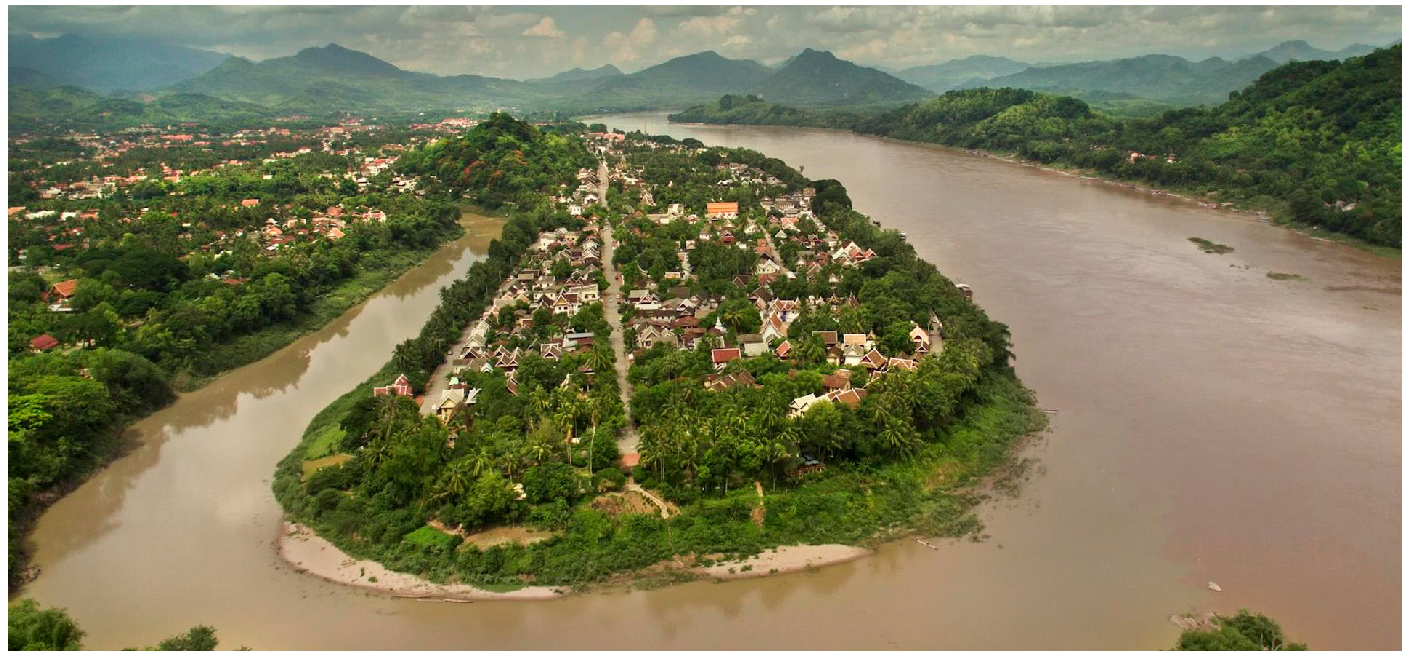
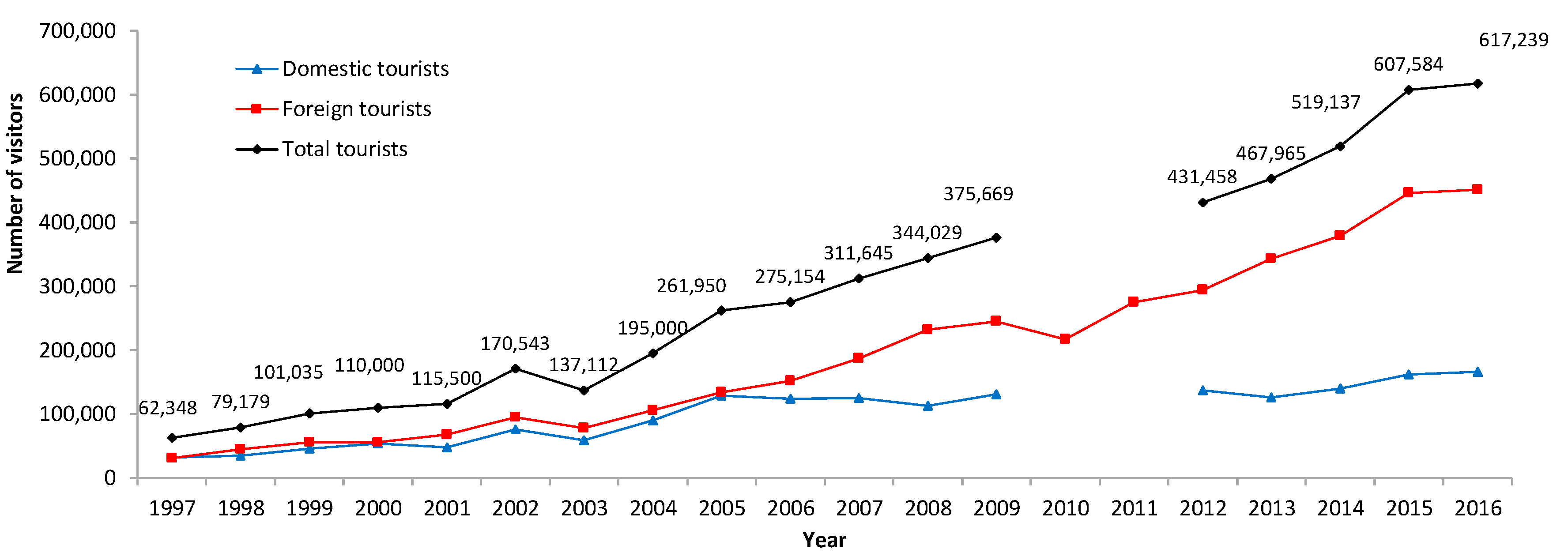

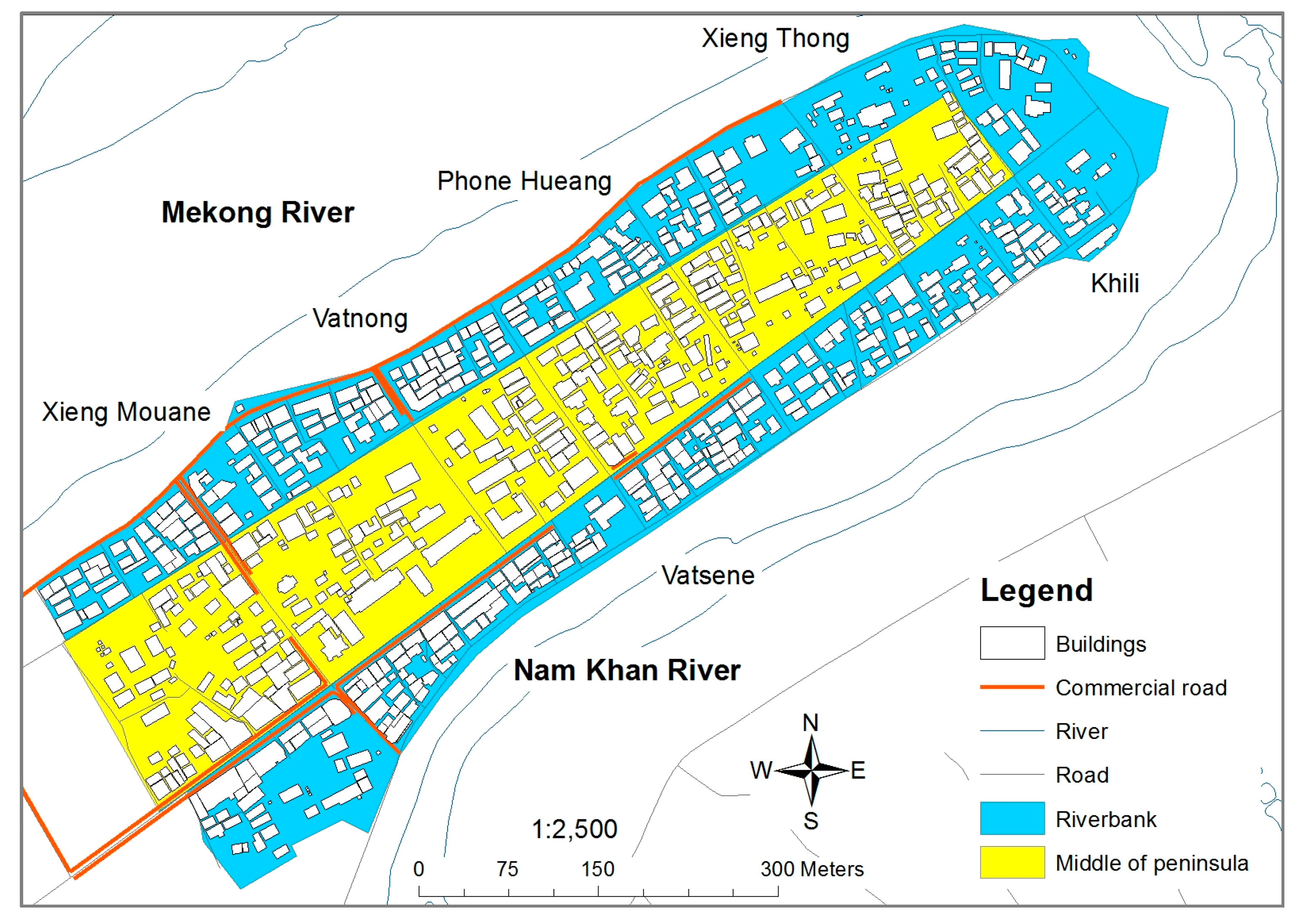
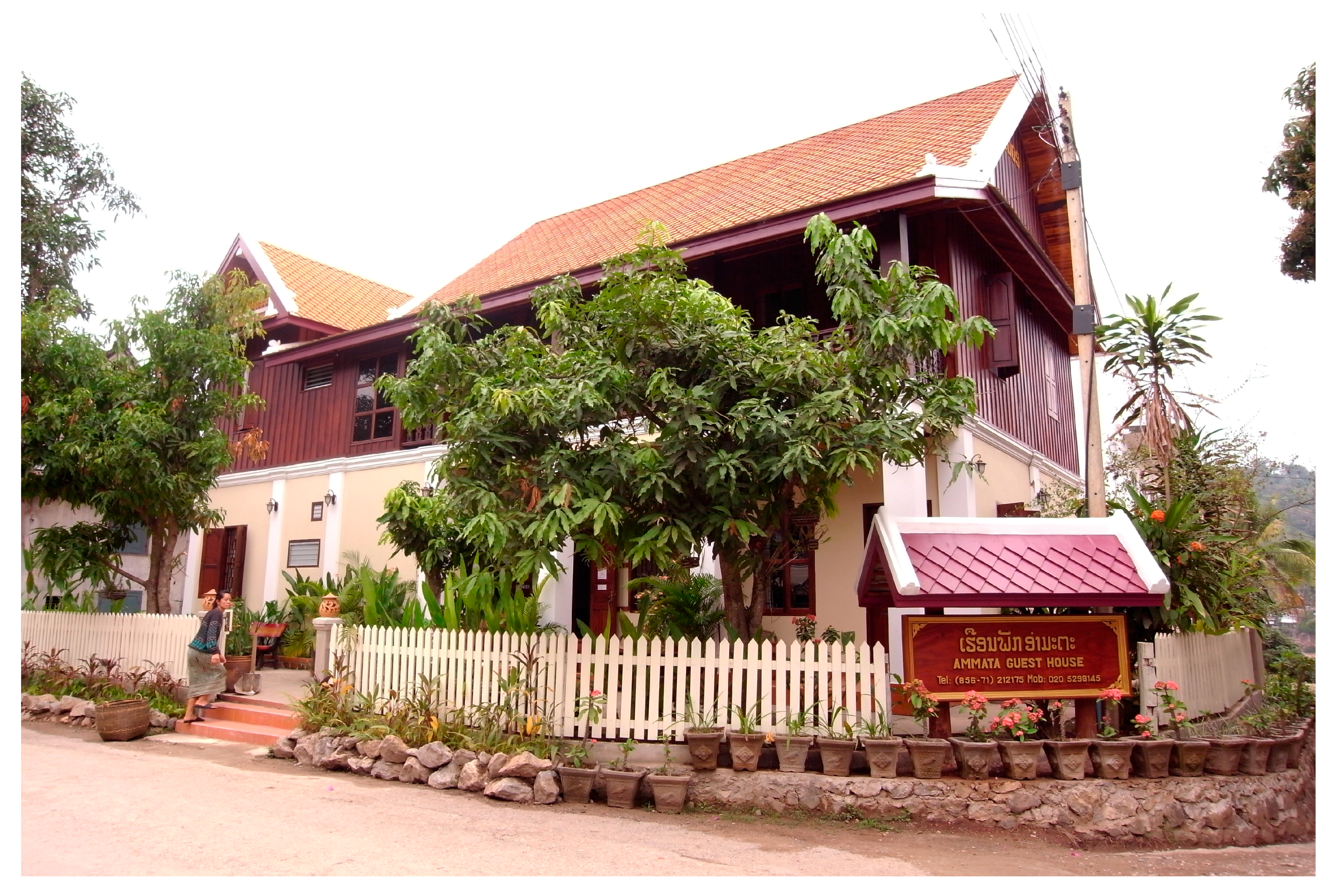
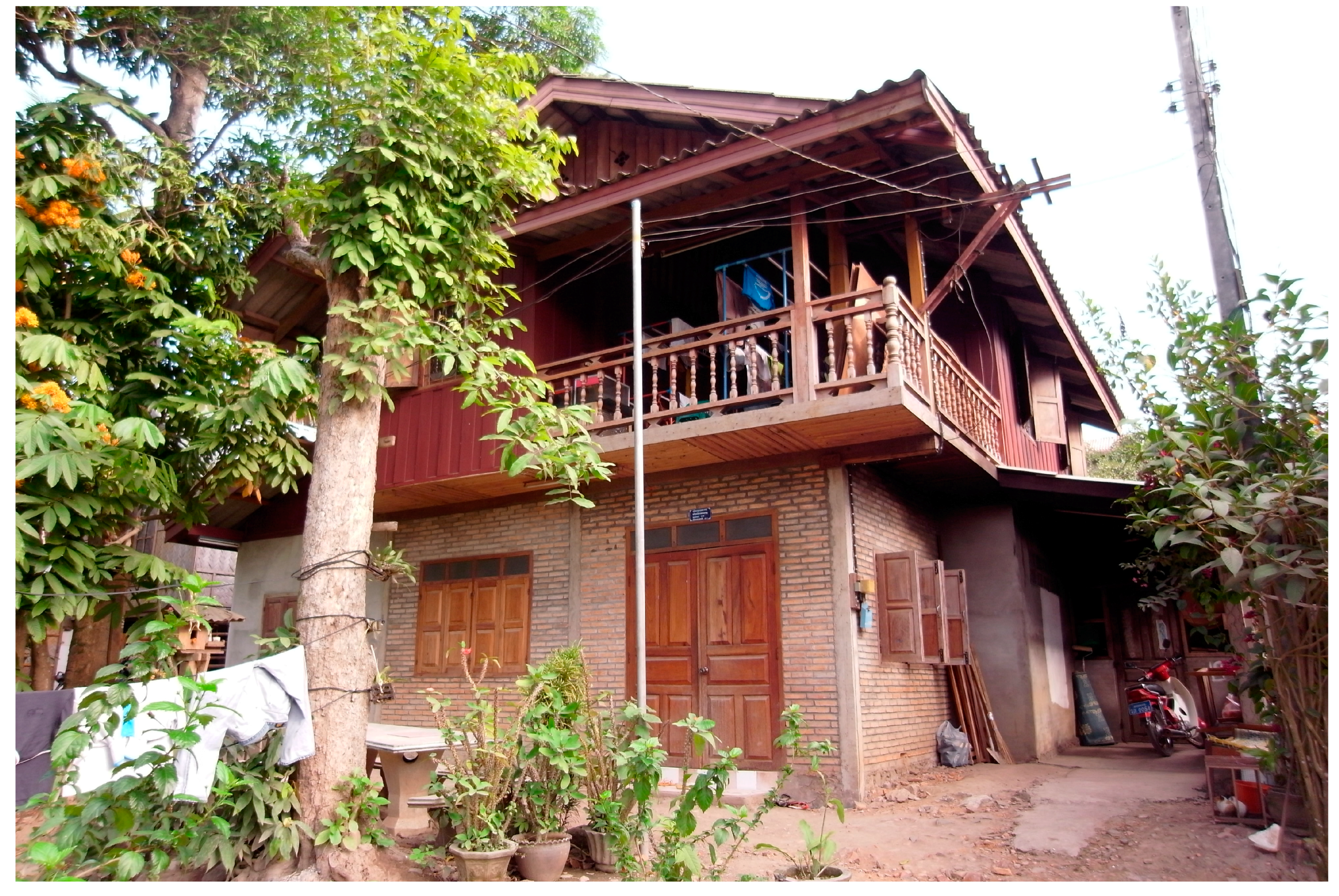
| Indicators [28,29] | Description [28,29] | Change | Spatial Distribution |
|---|---|---|---|
| Building usage | Building function utilized for public and private purposes | Increase of touristic usage contributed by converted residential buildings and construction of new touristic buildings | Increased along riverbanks |
| Building architecture | Building typology derived from Lao vernacular architecture and the architecture of foreign influences | Increase of Lao traditional architecture contributed by converted modern architecture and construction of new Lao traditional architecture | Increased along riverbanks |
| Building materials | Materials used to construct building structure | Increased use of modern materials contributed by change from traditional materials and construction of new buildings using modern materials | Increased throughout the peninsula |
| Roof materials | Materials used to construct roof structure | Increase of traditional roof materials contributed by converted modern roof buildings and construction of traditional roof buildings | Increased throughout the peninsula |
| Variable | Description | Coefficient | Odds Ratio |
|---|---|---|---|
| USAGEexisting | Existing buildings changed from other types of usage to touristic usage | 0.84 *** | 2.32 |
| USAGEnew | New buildings used for touristic purposes | 0.01 | 1.01 |
| Variable | Description | Chi-Square (Observed Value) |
|---|---|---|
| Existing buildings | ||
| ARCHexisting | Changed from other types of architecture to Lao traditional architecture | 13.655 *** |
| MATexisting | Changed from traditional to modern materials | 12.864 *** |
| ROOFexisting | Changed from modern to traditional roof materials | 69.566 *** |
| New buildings | ||
| ARCHnew | Used Lao traditional architecture | 3.302 |
| MATnew | Used modern building materials | 0.108 |
| ROOFnew | Used traditional roof materials | 7.645 ** |
© 2017 by the authors. Licensee MDPI, Basel, Switzerland. This article is an open access article distributed under the terms and conditions of the Creative Commons Attribution (CC BY) license (http://creativecommons.org/licenses/by/4.0/).
Share and Cite
Leong, C.; Takada, J.-i.; Hanaoka, S.; Yamaguchi, S. Impact of Tourism Growth on the Changing Landscape of a World Heritage Site: Case of Luang Prabang, Lao PDR. Sustainability 2017, 9, 1996. https://doi.org/10.3390/su9111996
Leong C, Takada J-i, Hanaoka S, Yamaguchi S. Impact of Tourism Growth on the Changing Landscape of a World Heritage Site: Case of Luang Prabang, Lao PDR. Sustainability. 2017; 9(11):1996. https://doi.org/10.3390/su9111996
Chicago/Turabian StyleLeong, Ceelia, Jun-ichi Takada, Shinya Hanaoka, and Shinobu Yamaguchi. 2017. "Impact of Tourism Growth on the Changing Landscape of a World Heritage Site: Case of Luang Prabang, Lao PDR" Sustainability 9, no. 11: 1996. https://doi.org/10.3390/su9111996






